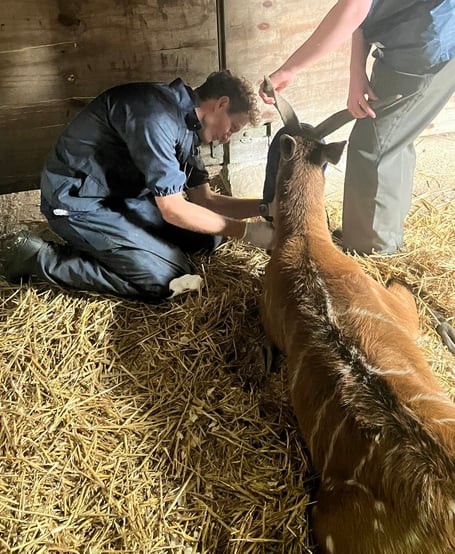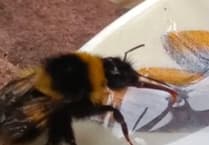Another day, another TB test, but as I looked at the animals I had in front of me on a TB-test a couple of weeks ago I realised that this one was going to be a bit different! Dealing with bovine tuberculosis (TB) has been part of my life ever since I qualified as a vet. Ask any cattle farmer, and they will tell you that trying to control the disease is one of the biggest challenges that they face, and has been for decades. Unfortunately, our beautiful part of South West England is a hotspot to find TB wreaking havoc on farms.
Cattle TB is caused by a bacterium called mycobacterium bovis, which infects cattle but can also infect people. Human infection is fortunately very rare now, (at least, in the western world –it is still a big killer in some parts of the globe). Some of you may remember how much of a problem it was here in the past –my Grandma had to have a lung removed not long after the war because of TB. That human risk, and its implications for trade of cattle and cattle products, is the reason why there’s been such a monumental effort to try to control the disease. Our farmers pay a huge emotional, logistical and financial price to try to control TB for the rest of us.
Unfortunately, TB also affects several other farmed and wild species. It’s the attempts to stop TB spreading through badgers which have made it such a contentious hot potato in the news, and got high-profile names such as Brian May speaking out on the topic. One species which doesn’t get name-checked very often in the TB debate is the one with which I was dealing with on this recent TB test of mine: Sitatungas! Sitatungas are a beautiful species of antelope about the size of a fallow deer, with orangey-brown coats and, in the males, long curving horns. They originally hail from the swampland habitats of central Africa, but unfortunately, I hadn’t been called to see them there. I was at Dartmoor Zoo!
Dartmoor Zoo were getting ready to move the sitatunga to a new home in another zoo across the country. Their keepers had organised with Sarah, their specialist zoo vet, for the Sitatungas to be health checked before they moved. Very responsibly, as a part of that they wanted to get them tested for TB, and I was asked to help.
The very dedicated keeper team did an excellent job corralling the antelope so that Sarah could sedate them by dartgun, and she and I were then able to give each of them a full clinical examination and take all the necessary diagnostic samples. We also attached some pipe insulation around those beautiful curved horns so that they didn’t injure themselves or anybody else on their trip.
An antidote injection was given and before long they were back up on their feet. We got the TB blood test results back a couple of days later–and it was good news! They had all passed the TB test and were ready to set off to their new home.





Comments
This article has no comments yet. Be the first to leave a comment.